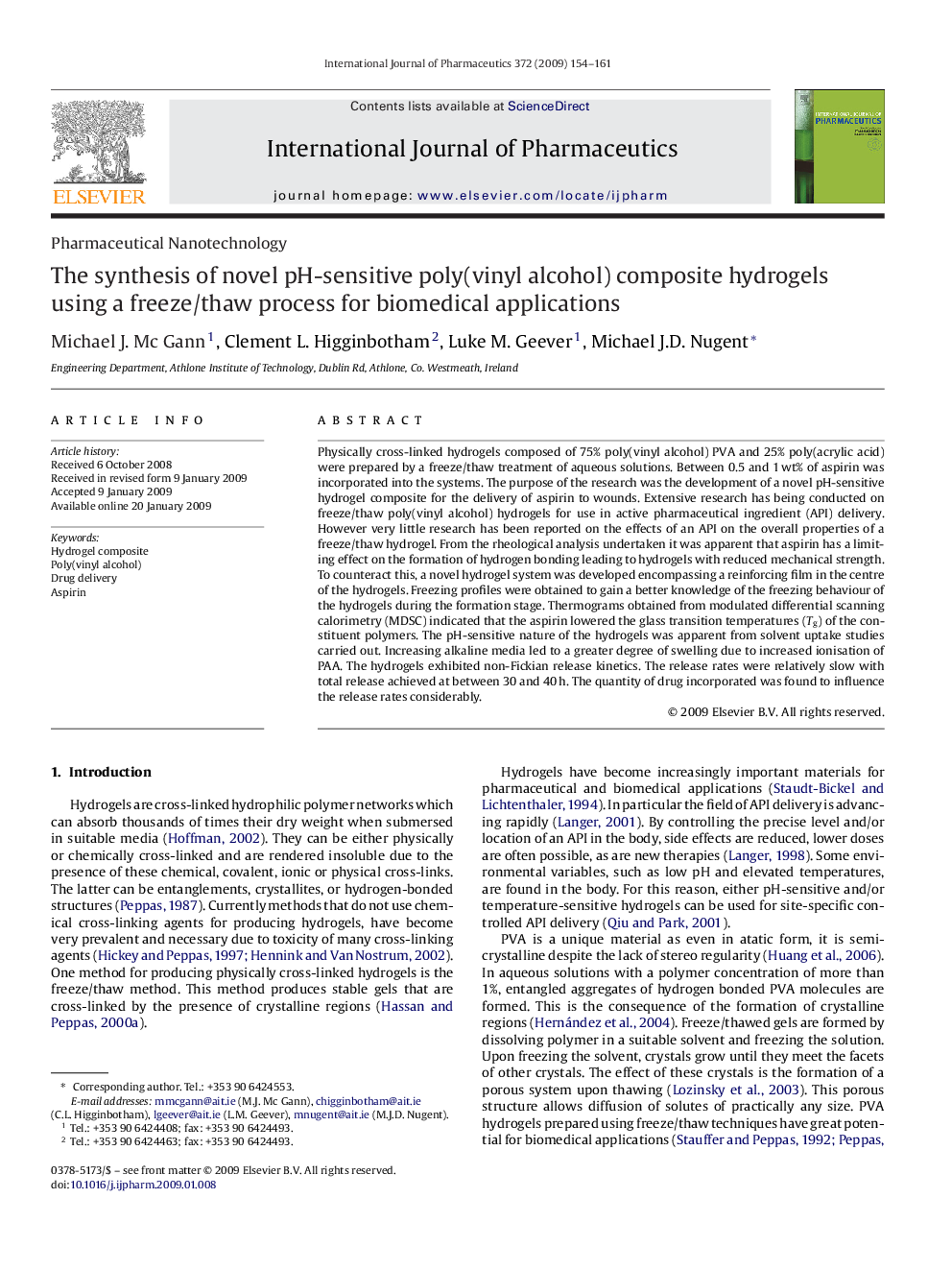| کد مقاله | کد نشریه | سال انتشار | مقاله انگلیسی | نسخه تمام متن |
|---|---|---|---|---|
| 2504662 | 1557473 | 2009 | 8 صفحه PDF | دانلود رایگان |

Physically cross-linked hydrogels composed of 75% poly(vinyl alcohol) PVA and 25% poly(acrylic acid) were prepared by a freeze/thaw treatment of aqueous solutions. Between 0.5 and 1 wt% of aspirin was incorporated into the systems. The purpose of the research was the development of a novel pH-sensitive hydrogel composite for the delivery of aspirin to wounds. Extensive research has being conducted on freeze/thaw poly(vinyl alcohol) hydrogels for use in active pharmaceutical ingredient (API) delivery. However very little research has been reported on the effects of an API on the overall properties of a freeze/thaw hydrogel. From the rheological analysis undertaken it was apparent that aspirin has a limiting effect on the formation of hydrogen bonding leading to hydrogels with reduced mechanical strength. To counteract this, a novel hydrogel system was developed encompassing a reinforcing film in the centre of the hydrogels. Freezing profiles were obtained to gain a better knowledge of the freezing behaviour of the hydrogels during the formation stage. Thermograms obtained from modulated differential scanning calorimetry (MDSC) indicated that the aspirin lowered the glass transition temperatures (Tg) of the constituent polymers. The pH-sensitive nature of the hydrogels was apparent from solvent uptake studies carried out. Increasing alkaline media led to a greater degree of swelling due to increased ionisation of PAA. The hydrogels exhibited non-Fickian release kinetics. The release rates were relatively slow with total release achieved at between 30 and 40 h. The quantity of drug incorporated was found to influence the release rates considerably.
Journal: International Journal of Pharmaceutics - Volume 372, Issues 1–2, 8 May 2009, Pages 154–161